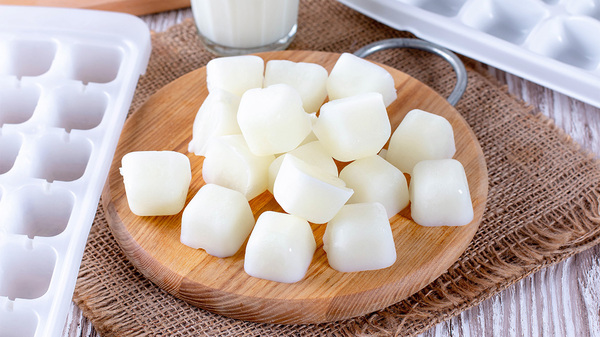Milk is a staple in most households, whether it’s used for cooking, baking, or simply enjoyed as a drink. However, there may be times when you have more milk than you can consume before it expires. In such cases, freezing milk can be a convenient way to extend its shelf life. But can you freeze milk without compromising its quality and flavor? The answer is yes, and in this detailed guide, we’ll explain how to properly freeze milk, what happens during the freezing process, and how to thaw and use frozen milk effectively.
Why Freeze Milk?
Freezing milk is an excellent option for those who want to avoid waste, especially if they buy milk in bulk or don’t use it frequently. Milk is perishable and can spoil quickly if not used within the expiration date. Freezing allows you to preserve milk for longer periods—up to 3-6 months—while still retaining its nutritional value. This is particularly useful for individuals who live in areas with limited access to fresh milk or those who simply want to avoid frequent trips to the store.
What Happens When You Freeze Milk?
When milk freezes, the water content in it expands and forms ice crystals. This process can slightly alter the texture and consistency of the milk. Upon thawing, you may notice that the milk separates, with some solids (like fats and proteins) floating to the top while the liquid sinks to the bottom. This separation can lead to a slightly grainy or watery texture, but the milk is still safe to drink and use in cooking.
Interestingly, freezing milk does not significantly affect its taste or nutritional value. It’s important to note that the freezing process doesn’t kill bacteria, so the milk should be fresh when frozen to ensure safety. Also, milk with added flavoring, like chocolate milk, may not freeze as well due to its sugar content, which can impact texture and flavor after thawing.
How to Freeze Milk Properly
Freezing milk is straightforward, but there are a few steps you should follow to get the best results. Here’s how to freeze milk effectively:
- Choose the Right Container Use freezer-safe containers or bags to store your milk. Avoid freezing milk in its original carton if it’s already opened, as the packaging can burst due to the expansion of liquid as it freezes. Instead, pour the milk into a plastic container with room for expansion (leaving at least 1-2 inches of space at the top) or a sturdy freezer bag.
- Leave Room for Expansion Milk, like many liquids, expands when frozen. Make sure to leave enough space at the top of your container or bag (about 1 to 2 inches) to allow for this expansion. If the milk container is too full, it may rupture or leak when the milk freezes.
- Label and Date Your Milk Always label your containers with the date you froze the milk. This will help you keep track of how long the milk has been frozen. Frozen milk should ideally be used within 3-6 months for the best flavor and texture.
- Freeze in Smaller Portions If you typically use milk in small amounts, consider freezing it in individual servings. This way, you can thaw only the amount you need, which helps prevent waste. You can use ice cube trays, small containers, or freezer bags for portion control.
Thawing Frozen Milk
Thawing frozen milk requires some patience and care to prevent it from losing too much of its texture. Follow these steps to thaw milk properly:
- Thaw in the Refrigerator The safest and best method to thaw milk is in the refrigerator. Place the frozen milk container in the fridge and allow it to thaw slowly over the course of 24 hours. This method ensures that the milk stays at a safe temperature while it thaws, minimizing the risk of bacteria growth.
- Avoid Thawing at Room Temperature Thawing milk at room temperature is not recommended, as it may promote the growth of harmful bacteria. Always ensure that milk is thawed in the refrigerator, even if you need to use it quickly.
- Shake or Stir After Thawing After the milk has thawed, it may appear separated, with the fat floating on top and the liquid settling at the bottom. Give the milk a good shake or stir to recombine the components. Keep in mind that the texture may still be a bit different from fresh milk, but it should still be suitable for most uses.
Uses for Thawed Milk
While thawed milk may not be ideal for drinking on its own due to changes in texture, it is still perfectly fine for many other uses:
- Cooking and Baking Thawed milk works well in recipes that call for milk, such as soups, sauces, baked goods, or smoothies. The texture changes from freezing are less noticeable when the milk is mixed with other ingredients. You can use thawed milk in your pancakes, cakes, muffins, or even in savory dishes like mashed potatoes or creamy sauces.
- Smoothies Thawed milk can be used in smoothies, where the other ingredients mask any slight texture changes. The milk will blend smoothly with fruits, yogurt, or other liquid bases.
- Coffee and Tea If you use milk in coffee or tea, thawed milk can be added without any significant issues. The heat from the coffee or tea will also help to blend the milk smoothly, making it ideal for hot beverages.
- Homemade Ice Cream Thawed milk can be used in making homemade ice cream, where its texture will be less noticeable. Freezing it again in a creamy dessert is a great way to use up any extra milk.
Can You Re-Freeze Milk?
Re-freezing milk is not recommended, especially if it has already been thawed once. Each time milk is thawed, it can undergo further separation, resulting in a less desirable texture. Additionally, re-freezing milk increases the risk of bacterial growth, which can make it unsafe to consume. To maintain the best quality and safety, only freeze milk once.
Tips for Freezing Milk
- Freeze Milk Early: If you know you won’t be able to use the milk before it expires, freeze it as soon as possible to preserve its freshness.
- Avoid Freezing in Large Containers: Large containers can take a long time to thaw and may result in inconsistent texture. Smaller portions are better for even freezing and easy thawing.
- Use Thawed Milk Quickly: Once thawed, use the milk within 2-3 days for the best flavor and safety.










